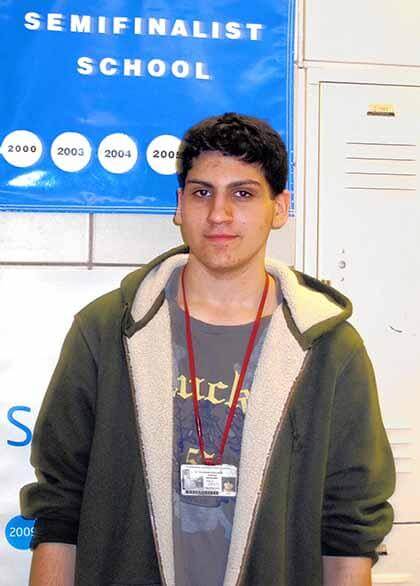By Joe Anuta
Two high school students from Forest Hills made it to the semifinals of a national science competition, but their projects are slightly more complicated than your standard frog dissection.
“The Effect of Autophagy, Apoptosis, and Nrf2 on DNA Damage in Mouse Cells at 0, 24, and 48 Hours of Ischemia” is the esoteric project of Anthony Barsamian, 17, a senior at Townsend Harris High School. “Mapping and Characterizing the egl-42 Gene in Caenorhabditis Elegans” is the project of Mao Hu, 17, at Stuyvesant High School in Manhattan.
The Intel Science Talent Search, sponsored by Intel, picked 300 seniors out of 1,744 around the country whose projects demonstrated a superb grasp of science. The prestige is nice, but Barsamian and Hu both receive $1,000 for themselves and $1,000 for their schools.
“It feels great. I had been working really hard and it really paid off in the end,” Barsamian said.
His project is related to cancer research, something he became interested in after someone in his own family was diagnosed with the disease.
“I’ve always been interested in cancer research,” he said. “I became interested in figuring out what the disease was and why it causes these problems. I read so much about it and tried to learn about it that I decided to do research about it.”
Ischemia, the focus of his project, is the scientific term for a lack of blood flow to cells. In this case, mouse cells. Autophagy and Apoptosis are different ways a cell can die. Barsamian studied how these processes related to cancer and hoped that his research could be of use in the future.
“In a sense, it could be utilized to understand the origins of cancer,” Barsamian said.
Barsamian did his research at St. John’s University.
Hu was more subdued when he found out the news.
“I was pleasantly surprised,” he said.
Hu said he enjoys the research so much that he would have continued it, competition or not. In fact, he plans to keep studying it in the future.
“I’m continuing my research to this day,” he said.
Hu’s project uses small roundworms called nematodes as models of the human nervous system.
“With only 302 neurons, it’s a really easy and simple way to study the nervous system,” Hu said.
He uses the worm’s neurons to study the effects of serotonin, a chemical that affects a person’s moods and appetite.
“The larger goal is to understand how these neurons regulate behavior,” he said. “Then you can understand how hunger, moods or depression works in humans.”
Hu hopes that his research could help understand behavioral diseases in humans.
He did his research at the New York University Medical Center.
The finalists for the competition will be flown to Washington, D.C., in March to compete for more than $630,000 in awards provided by the Intel Foundation.
Reach reporter Joe Anuta at januta@cnglocal.com or by phone at 718-260-4566.

































